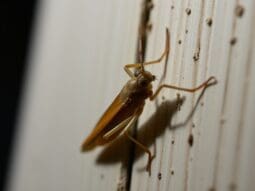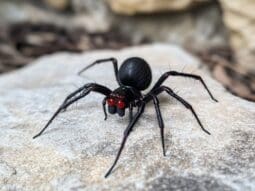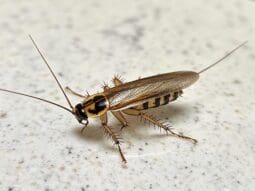
Recognizing Carpenter Ants and the Threat They Pose to Your Home
The summertime is ideal for going on vacations, camping, and just generally having a good time. If most of your family is going to be out during the summer, it may also be the ideal time for you to clear your home of lingering pests.
Among the numerous pests that may have made their way into your home are the ones known as carpenter ants. Despite their name, carpenter ants are capable of destroying your home from the inside out.
You must do what you can to prevent a carpenter ant infestation. Learning more about them is a good first step.
What Are Carpenter Ants?
According to the University of Kentucky’s Entomology Department, carpenter ants are on the larger side compared to other ant species. They measure around 1/4 to 1/2 inch in length and the queen carpenter ants can grow up to about an inch in size.
Carpenter ants also tend to have wings and appear blackish in terms of color.
Termites and carpenter ants are often confused with one another but there are some key differences in their appearance. For instance, termites have broad waists and straight antennae while the carpenter ants have narrow waists and antennae that are bent at a very distinct angle.
How Do Carpenter Ants Damage Your Home?
There’s one more key difference between carpenter ants and termites. Termites chomp down on wood in order to extract cellulose and other nutrients from it. Carpenter ants take a different approach to nourishing themselves.
Instead of extracting cellulose from wood, carpenter ants go after protein and sugar. To obtain those nutrients, carpenter ants will often feed on other insects, meats, and even pet food, according to the University of Minnesota. Meanwhile, their sugars come from items such as honey, syrups, and other sweets they stumble upon.
Considering their diet, you might assume that carpenter ants will not pose a serious threat to your home. That’s not the case however.
The reason why carpenter ants can still damage your home even if their diet does not feature wood is because of their nesting habits. They will remove the wood inside your walls in order to create a network of tunnels and establish parent nests.
Carpenter ants are particularly fond of nesting in areas where the wood is moist or decayed. Because of that, you will commonly find their nests located in areas around your home such as the bathroom, the kitchen, or underneath your roof. They may also take up shelter in hollowed out locations.
As soon as carpenter ants start to get more comfortable in your home, they will turn into a real nuisance.
You may not notice the damage they are inflicting at first, but over time, it can really leave a mark. Carpenter ants may compromise the structural integrity of your home, leading to you spending a lot of money on repairs.
How Do You Find Carpenter Ants?
Now that you know how damaging carpenter ants can potentially be, it’s time to take action against them. Finding them is the first step.
Homeowners looking to determine once and for all if they are living together with carpenter ants are advised to look for those insects during either the winter or spring.
Carpenter ants tend to get moving whenever spring rolls around. That’s also the time of the year when you are likely to find them scurrying around inside your home.
They are not as active during the winter but you may still spot some of them inside your home. If you do, that’s likely because they have already built a nest inside your home.
Spotting the carpenter ants inside your home is a step in the right direction but you will need to do more if your aim is to get rid of them.
You can start by luring the ants out with some honey. Monitor the spot where you placed the honey and see if any carpenter ants start showing up.
Once you see the ants, try following them as best you can. Eventually, they should lead you to their parent nest.
How Do You Destroy a Parent Nest for Carpenter Ants?
Finding the nest of the carpenter ants is one thing. Actually getting rid of the nests and putting a stop to the carpenter ant infestation is an ordeal unto itself.
Outdoor nests are easier to deal with because the carpenter ants can be driven away by carefully using pesticide.
Removing the nest is harder if it’s located indoors because you will likely have to drill holes into your wall in order to find it. Even if you do successfully find the indoor nest, getting rid of it will be tough as you have to be extremely careful when using certain materials.
How Do You Prevent a Carpenter Ant Infestation?
Carpenter ants can start wreaking havoc inside your home pretty quickly. It would be better if you could prevent them from entering your home in the first place.
You can start by patching up leaks in your home. The leaks can cause certain wooden components of your home to become moist and thus become a more suitable habitat for carpenter ants. You can discourage carpenter ants from moving into your home by simply fixing any leaks that emerge.
It’s also a good idea to clip tree branches that are hanging too close to your home. The carpenter ants may be able to use those branches to gain easy access to your home.
Lastly, if you’re going to use firewood, make sure that you stack it far away from your home. A stack of firewood is an attractive nesting area for ants. Keep the ants at bay by arranging your firewood more thoughtfully.
Call on the Pros to Deal with Carpenter Ants
Hopefully, the prevention tips listed above will keep the carpenter ants away from your home. However, if you suspect that the carpenter ants have already infiltrated your home, it’s time to take more serious action.
Please feel free to call on us at Romex Pest Control for assistance. We are always ready to help residents of Louisiana, Mississippi, Oklahoma, and Texas who are in need of expert pest control.
We hope you enjoy these informational articles. If you'd like to learn more about our eco-friendly pest control services, call (844) 955-2447.
Read More
Your Path to a Pest-Free Space
Romex Pest Control is committed to protecting you, your children, and your pets with our eco-friendly, child-friendly, and pet-friendly guaranteed pest control solution.
We are confident in solving all pest, rodent, and termite problems.
Romex Pest Control is fully insured and licensed in Texas, Oklahoma, Louisiana, and Mississippi.
Established 2016 © Copyright 2024 Romex Pest Control










